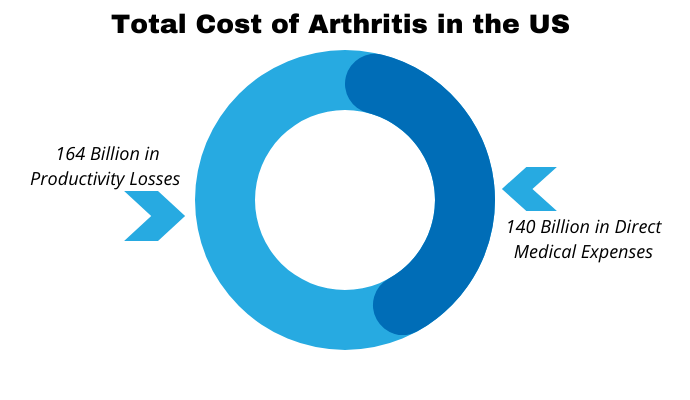
Getty Images
Top 10 Most Expensive Chronic Diseases for Healthcare Payers
The top 10 most expensive chronic diseases for healthcare payers eat up significant healthcare dollars.
Chronic diseases are on the rise in the United States, leaving healthcare payers with the challenge of covering care for patients with these expensive, long-term conditions.
Chronic diseases are such a costly healthcare expense that experts like the AMA have asked private and public payers to fund chronic disease management programs. Other stakeholders have established chronic disease management funds that provide Medicare beneficiaries financial support to pay for the high costs of chronic care treatment.
Healthcare spending reached a total of $4.1 trillion in 2020, based upon estimates from CMS. Spending is expected to continue to grow at an average of 5.4 percent through 2025, with chronic diseases treatment comprising a significant portion of that spending.
Based on the latest data from the CDC and presented in descending order, here are the top 10 most expensive chronic diseases for healthcare payers to treat.
Heart diseases and stroke
Heart disease and stroke costs in the US total $363 billion per year, split between $216 billion in direct medical costs and $147 billion in lost productivity.
The sheer volume of heart disease or stroke fatalities is an ever-growing concern for payers. According to the CDC, more than 877,500 Americans die from these diseases every year. Thus, these diseases are the leading cause of death for Americans today.
Diabetes
As one of the most prevalent chronic conditions in healthcare, diabetes care cost $327 billion in 2017. Seventy-two percent of diabetes treatment costs ($237 billion) were related to direct healthcare expenses.
34 million Americans live with diabetes in the US, and another 88 million live with prediabetes. As the seventh-leading cause of death in the US, diabetes can lead to various health complications such as blindness, kidney disease, amputations, and heart disease. Payers have to be confident and ready to cover diabetic patients by supporting public education and provider initiatives to treat diabetics.
Arthritis
In the US, the total cost of arthritis was an estimated $304 billion, split between $140 billion in direct medical expenses and $164 billion in related productivity and care management losses.
Arthritis affects 25 percent of adults in the US, or 59 million people, and is expected to rise to 78 million cases by 2040. Arthritis also occurs with other chronic conditions as many patients are unsure how to manage their symptoms.
Linking clinical services to community programs is an effective strategy for dealing with arthritic patients and mitigating other health risks.

Alcohol-related health issues
In 2010, excessive alcohol use cost the US economy $249 billion, or roughly $2.05 per drink. Alcohol-related deaths totaled 95,000 people per year and shortened the lives of working adults by an average of 30 years.
Like smoking, alcohol-related health concerns stem from socialized behaviors and can be improved by provider interventions supported by payers. Excessive alcohol use is known to cause liver cancer, high blood pressure, and other chronic conditions.
Cancer
According to the latest estimates from the CDC and the National Cancer Institute, cancer care is estimated to cost $240 billion by 2030 due to healthcare inflation over previous decades.
Even though cancer rates are decreasing, the CDC predicts that cancer will continue to be one of the leading causes of death in the US. 1.7 million Americans are diagnosed with cancer every year, and another 600,000 die from the disease.
Promoting early screenings, building awareness about preventative techniques, and developing strategic partnerships remain the most effective measures for cancer prevention.
Obesity
The United States spends $147 billion on healthcare related to obesity and roughly $117 billion on costs associated with inadequate physical activity. In 2006, the healthcare costs of obese patients were $1,429 higher than patients at an average weight. Obesity is implicated in developing or worsening many other chronic conditions, including diabetes and heart disease.
Public health initiatives such as education, promoting access to healthier foods, and delivering preventive care to pediatric patients can help to keep patients at a healthy weight.
Alzheimer's disease
In 2019, about 16 million Americans provided 17 million hours of unpaid care to friends and family with Alzheimer's and related dementia. Based on CDC estimates, that amount of unpaid care is valued at $244 billion.
In addition, direct healthcare expenses for providing Alzheimer’s patients with long-term and hospice care will cost $305 billion in 2020 alone. The disease affects 5.7 million Americans and is the sixth leading cause of death.
Smoking-related health issues
Estimated costs for smoking-related health issues in the US total in the hundreds of billions per year. The direct costs alone are around $225 billion per year.
Most of the US population lives under laws that protect non-smokers from secondhand smoke and tobacco exposure because of the associated health risks of smoking. Smokers can develop chronic conditions such as cancers, high blood pressure, and cardiac health concerns.
While the CDC has established protocols to help health systems mitigate smoking risk, payers should consider offering their beneficiaries tobacco cessation programs. Payers should also support provider-based intervention strategies that encourage patients to cut back on tobacco use steadily.
Tooth Decay
Tooth decay is estimated to lead to $45 billion in lost productivity each year. As an ailment that often affects children, it is estimated that 34 million school hours are lost each year due to dental appointments. Children from low-income families are twice as likely to suffer from tooth decay compared to children from high-income families.
For adults, oral disease and tooth decay affect 1 in 4 people, and they are often exaggerated by health factors like diabetes or tobacco use. Smokers are especially likely to be affected by tooth decay, with 4 in 10 older smokers losing all their teeth.
Epilepsy
On its own, epilepsy in the US creates medical expenses of $8.6 billion annually. Nationwide, 3.4 million people suffer from epilepsy, or around 1.2% of the US population.
Epilepsy results in seizures that can sometimes lead to death. People with epilepsy can also suffer from worse mental health or other impairments that are not easily identifiable.




